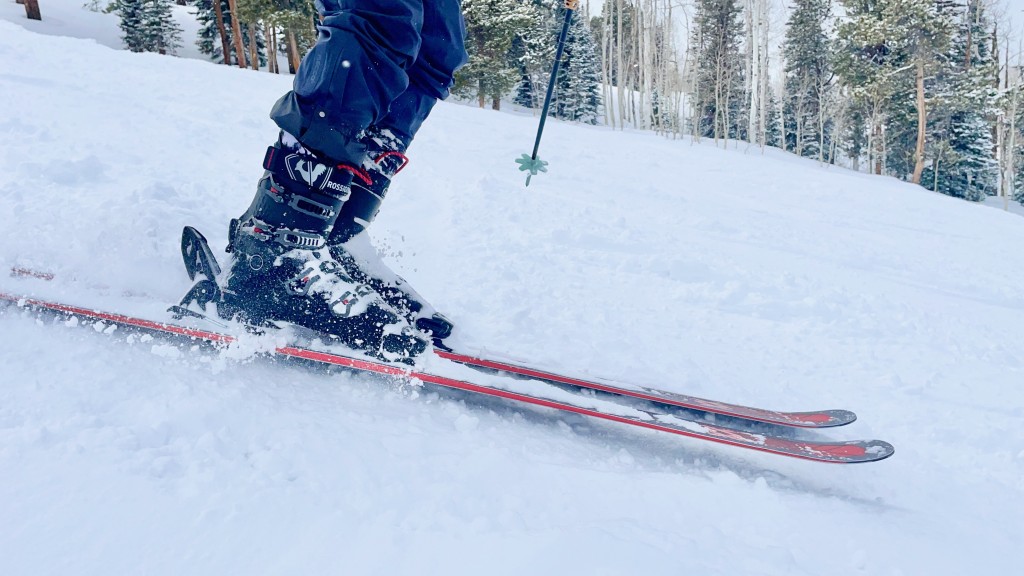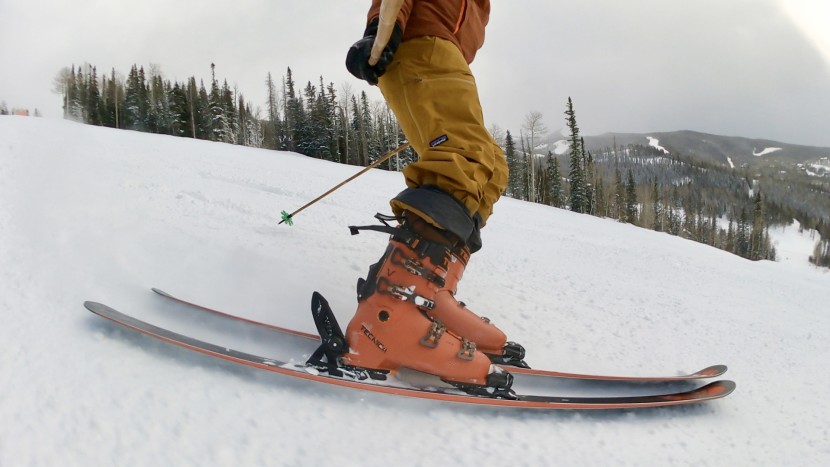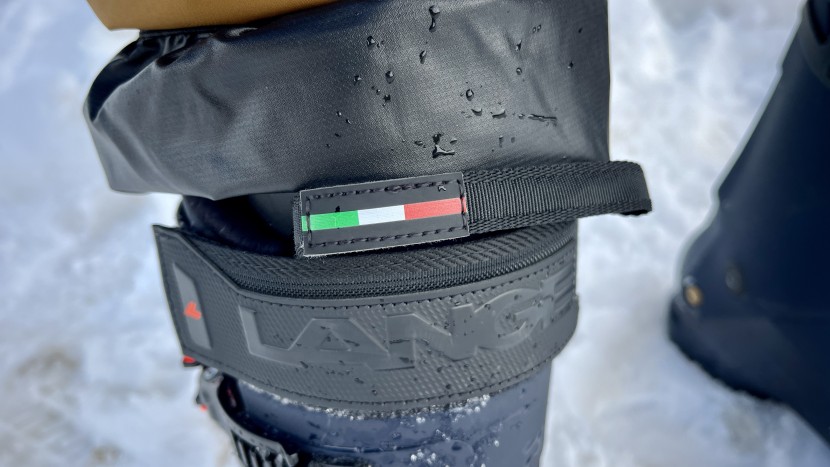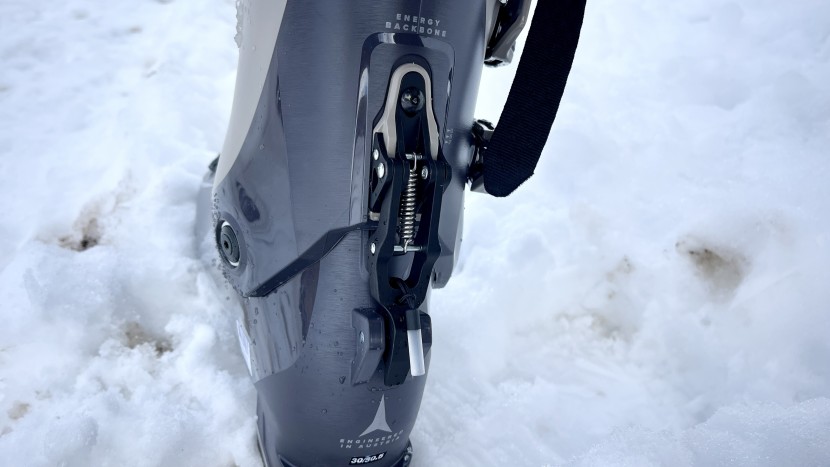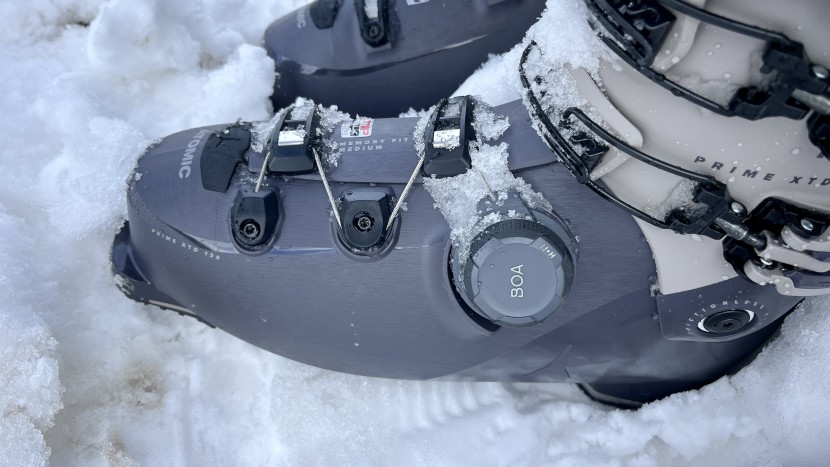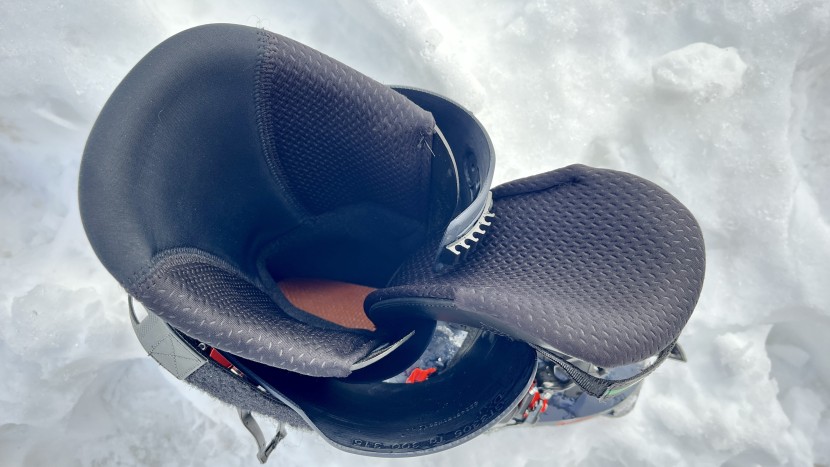We tested every product in the lineup at Telluride Ski Resort, a mountain known for its world-class steeps expert terrain, as well as its well-groomed beginner and intermediate terrain. We tested these boots, one after another, often on the same run. For a close comparison, we even skied some runs with one foot in one boot and the other foot in a different boot! This side-by-side comparison testing reduced variables and ensured we each boot objectively in similar conditions. We assessed every boot based on the four metrics defined below.
Performance
We assessed every boot on its flex, paying close attention to the flex profile, how the boots transferred energy to our skis, and the responsiveness of the boot in edge-to-edge transitions. We tested every boot on soft groomers, icy bumps, spring snow, deep powder, and crud. We made intentional short- and long-radius turns to test lateral flex, and made notes on overall flex and feel while freeskiing. To eliminate the skis and bindings variable, we tested each boot on the same pair of skis: the Volkl M7 Mantra, mounted with Marker Griffon 13 bindings.
Comfort and Fit
We surveyed multiple testers about the comfort and fit of each boot to make sure we accounted for nuanced variations in foot shape and width. We wore each boot for an entire season, skiing in both warm and cold weather, to ensure that a correctly fitted boot left room for our feet to swell without issue. Any hotspots or pressure points were noted and further investigated. We compared notes between testers to make sure we weren't biased by one specific foot shape. We also looked at the moldable or customizable components of each boot liner and shell that would allow for a single model to accommodate more foot shapes.
Features
We assessed each boot's features right out of the box, from the sole to the cuff, noting useful components. From fitting to skiing, we then tested to make sure that all of those features worked as advertised. We looked at everything: GripWalk soles, heat-moldable liners, customizable shells, micro-adjustable buckles, BOA systems, power strap design, volume spacers, removable tongues, walk modes, and tech binding inserts. More features aren't necessarily better, so we tested these boots to ensure the feature set actually enhanced performance, rather than existing just as gimmicks.
Warmth
Skiing is a cold-weather activity – the warmer your boots are, the longer you can stay out on the slopes. We tested each boot using the same type of ski sock through a season's worth of weather conditions. On the coldest days, we took note of how many laps and chairlift rides we could withstand in each boot before needing to take a warm-up break. We wore the same outfit with each boot on these cold days to make sure that our body temperature was staying relatively constant.

